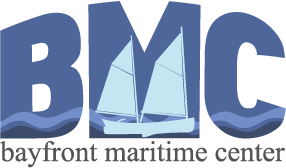Dust is flying, glue is flowing and big, heavy pieces of Porcupine are arriving by truck, ready to
be assembled and installed. In the past few weeks, we’ve transferred Porcupine’s hull from the cradle she’d been in for the past 20 years or more and on to blocking and jack stands. This allowed us better access to the underside of her keel. With room to work and move under the hull, we created a plywood pattern for the top and bottom plates of the steel ballast keel.
Since I first wrote about the ballast keel, there’s been a fair bit of head-scratching about the best way to secure it to the hull. But with the plan decided, Shipwright Bob Arlet, and his assistant Nick Rinn are making fiberglass “floors” to reinforce areas of the hull where metal brackets and bolts will hang the 7800 pounds of keel. Soon the plates of Cor-Ten steel will be welded up and slid into place to become an integral part of Porcupine,
adding both weight to improve stability and lateral plane for better weatherly performance.
With the partially finished hull we have, there are any number of places we could have started her transformation into Porcupine—the bow, stern, deck and whole interior will soon be whipped into Schoolship shape. But starting with the keel makes the best sense. Starting from the bottom up, with a solid, heavy, grounding piece of structure, construction is putting the right shoe—the ballast shoe—forward.
All best from Team Porcupine!



Leave A Comment